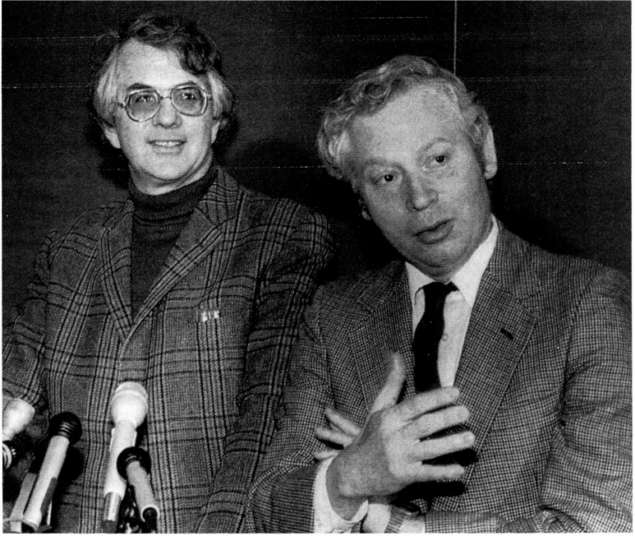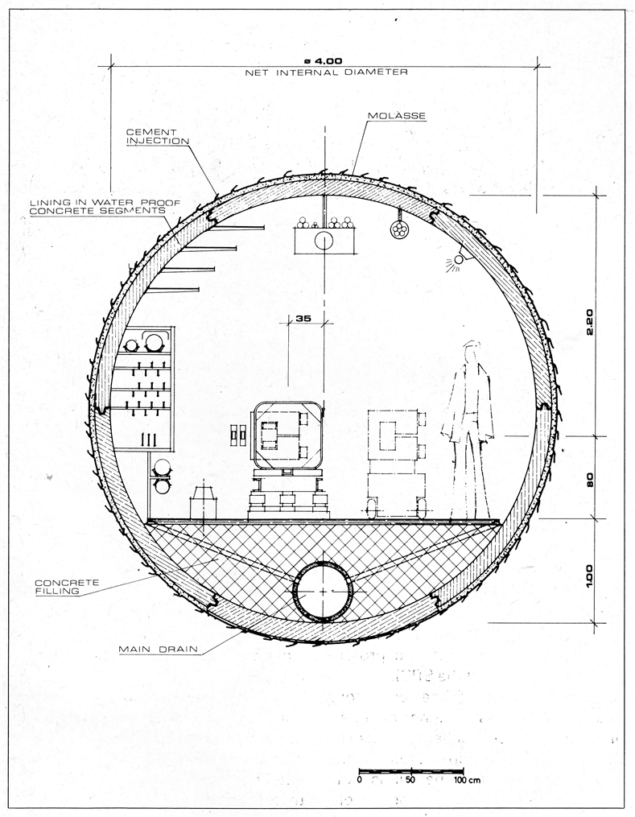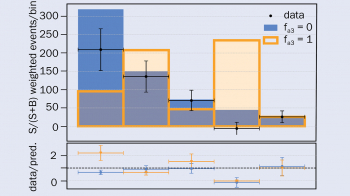The half-century-long hunt for the Higgs boson captured in the pages of the Courier.

It was March 1977 when the hypothetical Higgs boson first made its way onto the pages of this magazine. Reporting on a talk by Steven Weinberg at the Chicago Meeting of the American Physical Society, the editors noted the dramatic success of gauge theories in explaining recent discoveries at the time — beginning with the observation of the neutral current at CERN in 1973 and the “new physics” following the J/ψ discovery at Brookhaven and Stanford the following year, observing: “The theories also postulate a set of scalar particles in a similar mass range… If Higgs bosons exist, they will affect particle behaviour at all energies. However, their postulated interactions are even weaker than the normal weak interactions. The effects would only be observable on a very small scale and would usually be drowned out by the stronger interactions.”

The topic clearly drew the attention of readers, as just a few issues later, in September 1977, the editors delved deeper into the origins of the Higgs boson and its role in spontaneous symmetry breaking, offering Abdus Salam’s “personal picture” to communicate this abstruse concept: “Imagine a banquet where guests sit at round tables. A bird’s eye view of the scene presents total symmetry, with serviettes alternating with people around each table. A person could equally well take a serviette from his right or from his left. The symmetry is spontaneously broken when one guest decides to pick up from his left and everyone else follows suit.”
Within a year, CERN Courier was on the trail of how the Higgs boson might show itself experimentally. Reporting on a “Workshop on Producing High Luminosity Proton–Antiproton Storage Rings” held at Berkeley, the April 1978 issue stated: “As well as the intermediate boson, the proton–antiproton colliders could give the first signs of the Higgs particles or of other unexpected states. While the discovery of weak neutral currents and charm provided impressive evidence for the gauge-theory picture that unifies electromagnetic and weak interactions, one prediction of this picture is the existence of spinless Higgs bosons. If these are not found at higher energies, some re-thinking might be required.” In the December 1978 issue, with apologies to Neil Armstrong, the Courier ran a piece titled “A giant LEP for mankind”. The hope was that with LEP, physicists had the tool to explore in depth the details of the symmetry breaking mechanism at the heart of weak interaction dynamics.

The award of the 1979 Nobel Prize in Physics to Weinberg, Glashow and Salam for the electroweak theory received full coverage in December that year, with the Courier expressing confidence in the Higgs: “Another vital ingredient of the theory which remains to be tested are the Higgs particles of the spontaneous symmetry breaking mechanism. Here the theory is still in a volatile state and no firm predictions are possible. But this mechanism is crucial to the theory, and something has to turn up.”
A Higgs for the masses
To many people, wrote US theorist Sam Treiman in November 1981, the Higgs particle looks somewhat artificial — “a kind of provisional stand-in for deeper effects at a more fundamental level”. Four years later, “with several experiments embarking on fresh Higgs searches”, Richard Dalitz and Louis Lyons organised a neatly titled workshop “Higgs for the masses” to review the theoretical and experimental status. Another oddity of the Higgs, wrote Lyons, is that unless it is very light (less than 10–17 eV), the Higgs should make the universe curved, “contributing more to the cosmological constant than the known limit permits”. Lower limits (from spontaneous symmetry breaking) and higher limits (from the unitarity requirement) open up a wide range of masses for the Higgs to manoeuvre — between 7 and 1000 GeV, he noted. “From time to time, new ‘bumps’ and effects are tentatively put forward as candidate Higgs, but so far none are convincing.”
LEP’s electroweak adventure reached a dramatic climax in the summer of 2000, with hints that a light Higgs boson was showing itself. In October, the machine was granted a stay of Higgs execution. Alas, the signal faded, and the final curtain fell on LEP in November — a “LEPilogue” heralding the beginning of a new era: the LHC.
Discussions about a high-energy hadron collider were ongoing long before: ICFA’s Future Perspectives meeting at Brookhaven in October 1987 noted two major hadron collider projects on the market: “the US Superconducting Supercollider, with collision energies of 40 TeV in an 84 kilometre ring, and the CERN Large Hadron Collider, with up to 17 TeV collision energies”. In December 1994, shortly after CERN turned 40, Council provided the lab with “The ultimate birthday present“: the unanimous approval of the LHC. A quarter of a century later, the LHC started up and brought particle physics to the world.

Together with LEP data, Fermilab’s CDF and DØ experiments and the LHC 2011 measurement campaign narrowed down the possible mass range for the Higgs boson to be between 115 and 127 GeV. First tantalising hints of the Higgs boson were presented on 13 December 2011. The quest remained open for another half a year, until Director-General Rolf Heuer, following the famous talks by ATLAS and CMS spokespersons Fabiola Gianotti and Joe Incandela, concluded: “As a layman I would say: I think we have it” on 4 July 2012. It was a day to remember: a breakthrough discovery rooted in decades of work by thousands of individuals that rocked the CERN auditorium and reverberated around the world. A new chapter in particle physics had begun…
To mark the 10th anniversary of this momentous event, from Monday 4 July the Courier will be exploring the theoretical and experimental effort behind the Higgs-boson discovery, the immense progress made by ATLAS and CMS in our understanding of this enigmatic particle, and the deep connections between the Higgs boson and some of the most profound open questions in fundamental physics.
Wherever the Higgs boson leads, CERN Courier will be there to report!








